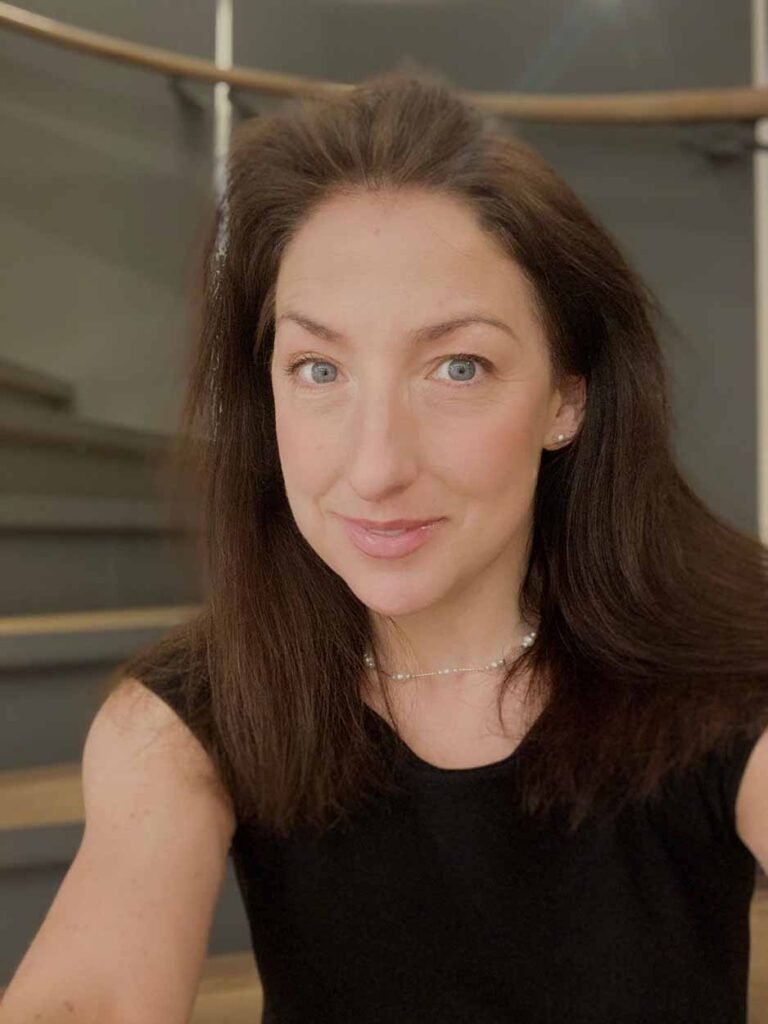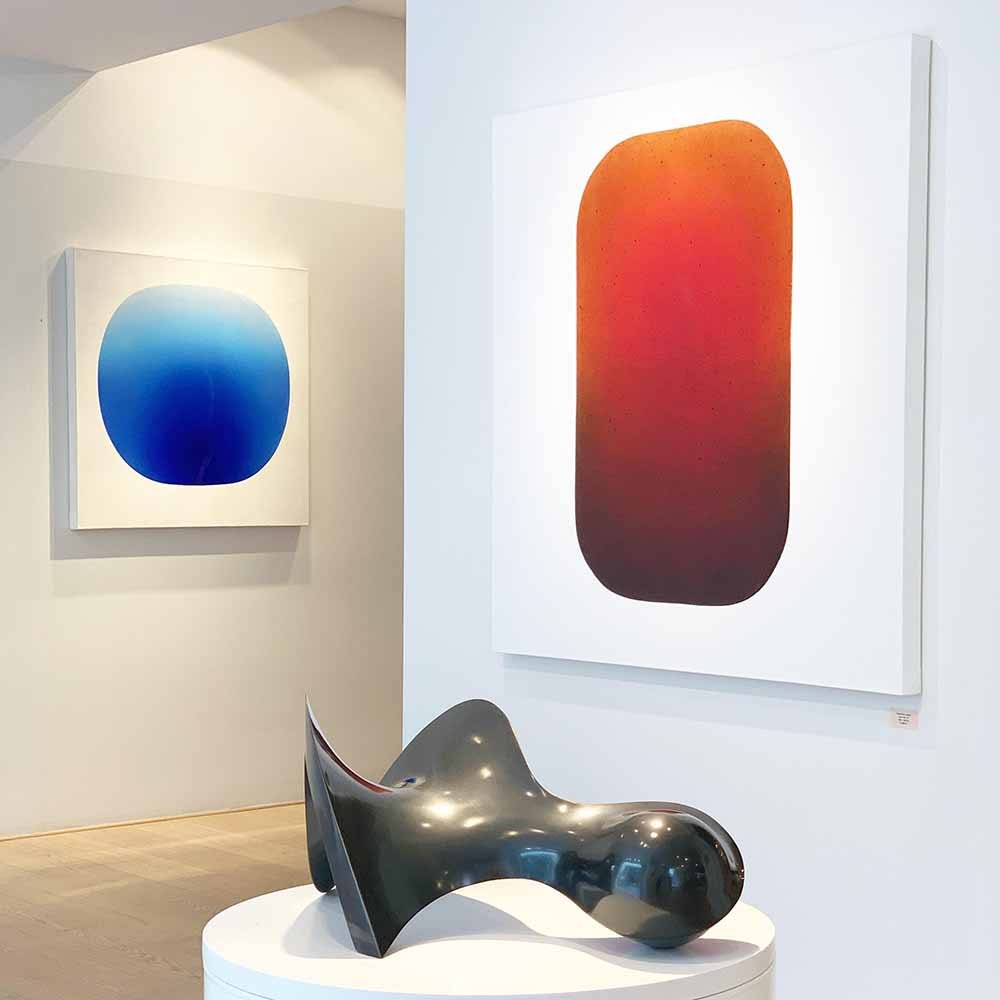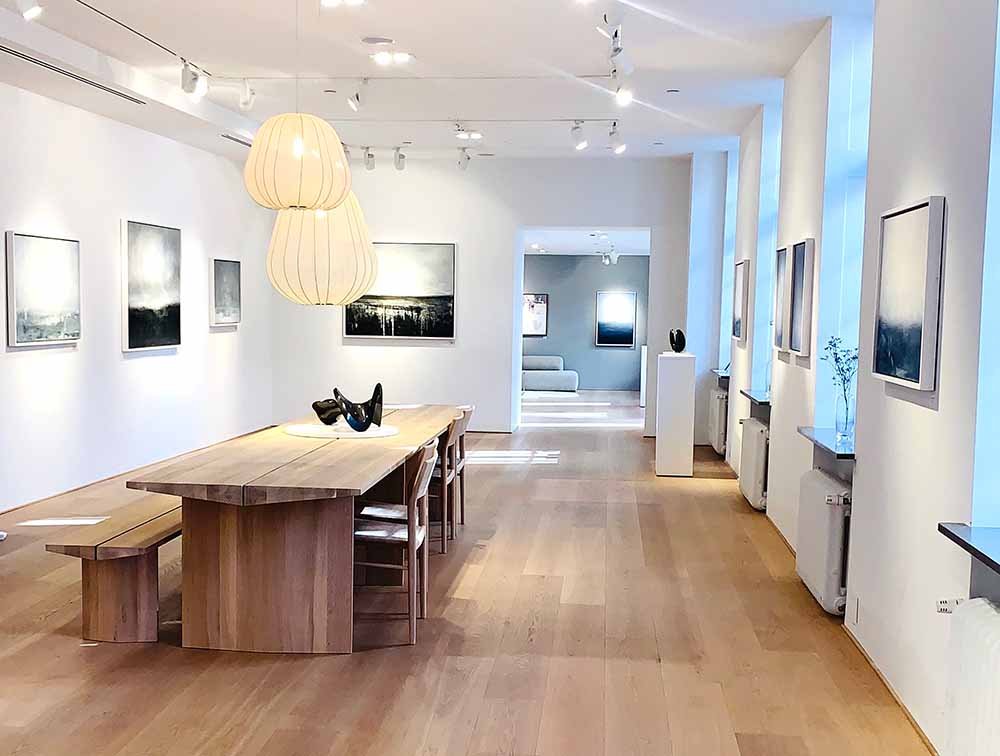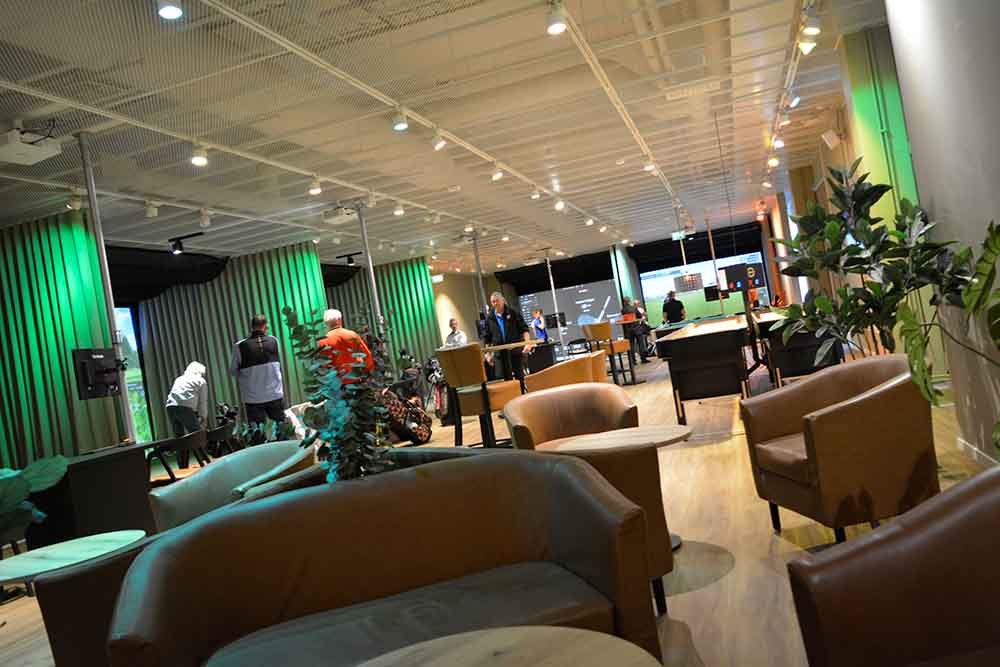Malmös internationella konstscen – Intervju med Juliet Rees-Nilsson

As I step through the door and find myself in the middle of the ground floor, I see animals—mainly polar bears—depicted in the paintings around me. The room is spacious, with the afternoon sun flooding in and brightening the space even more, and I immediately feel at home. It’s not just the furniture that stands out and creates a cosy, familiar atmosphere—like a sofa placed in front of a rug reminiscent of a living room. The table surrounded by chairs beneath a lamp also softens the impression of being in a public space, while the daylight pouring through the windows and the abundance of colours make the place feel even warmer. The walls are decorated with paintings featuring various elements from nature and other nature-inspired motifs.
I introduce myself to Juliet Rees-Nilsson, who runs the Nordic Art Agency at Hansa in Malmö, and she leads me to the far end of the room, where the table is set and where the interview will take place after we shake hands. Once we settle into the comfortable chairs, I notice a spiral staircase and realise that I will have to go upstairs later to see the rest of the artwork. The gallery dog, Lucy, sits beside us in her own seat, quickly transforming into a friendly companion during our conversation.
We begin by talking about Juliet’s interest in contemporary art and what fascinates her most about it. I also ask a few questions about her background in the field. She explains that she has been interested in art and history since her youth and that, during high school, she specialised in English and photography. Her passion for art history continued, leading her to earn her master’s degree at the University of Edinburgh, but it intensified during a stay in Italy as part of an introductory course before starting university. She recalls the impressions she gathered from seeing Italy’s unique landmarks and how those experiences could be connected to more modern art.
As she mentions Italian paintings and the beautiful churches, our conversation drifts towards Italian architecture, eventually leading us to discuss the fine line between architecture and art.
At that point, I start thinking about the gallery space and its location, and I ask:
“How did the Nordic Art Agency come to be located in Malmö? Why was Malmö chosen specifically for the gallery’s location? I’m thinking in particular about Malmö’s geographical position — in southern Sweden, not too far north like Stockholm, and at the same time close to Copenhagen…”

Juliet explains that she is originally from London, but fell in love with a Swedish man, which led her to divide her time between Sweden and England. She has also worked at the Mayfair gallery in London and, over time, for the Copenhagen Art Museum. Over the years, she settled in Sweden with her family, and Malmö was the largest city she saw as accessible for starting her gallery career. The city was not too big and was well-suited for the international focus of her work. Juliet’s plan was to collaborate with artists who had not previously considered Scandinavia as a potential market and to offer them a platform in the region.
“It felt like it was something the city really needed. It was a non-commercial gallery, and I introduced new artists who were interested in being seen in the city.”
Since Juliet’s move to the city in 1998, she has noted the incredible development Malmö has undergone. She also describes how she has seen the region’s cities grow closer together and how the city has become more culturally enriched over the years. She illustrates this by saying she collaborates with artists across the strait and has also had visits from Danes who appreciate her gallery. She further explains that travelling across the bridge is no longer seen as a big deal — it has now become more of a habit. She sees benefits in the increased integration between the two sides and describes how mobility across the Öresund has had a positive impact. She also points out the enriched interaction between the two sides of the strait and how it has contributed to Malmö’s cultural vibrancy, which suited her business model well since the international aspect of art is at its core. Juliet also expresses her active desire to make art accessible in her gallery and emphasises that the gallery’s layout plays an important role in creating a sense of inclusion and openness.
I ask Juliet about previous projects and concepts involving architecture, which leads to a discussion about her collaborative project with e-interiör, which brings together different designers, including both Swedish and Danish. The story ends with Juliet’s space being used to host an event called Art & Design, which showcased various Scandinavian companies in different design fields. The event featured a variety of installations — from furniture to ceramics, with textiles in between — to highlight different aspects of the creative design field, and included designs made from a wide range of materials and objects.
Nordic Art Agency has also worked on projects focusing on sustainability. Juliet shares that students from Lund had the opportunity to attend lectures on various topics and their origins, and were then given an assignment to design different objects themselves. They created items such as earrings and bags, which were later exhibited.
Out of curiosity, I also ask about future projects and whether other similar collaborations, like Art & Design, might take place — and I wonder if an event centred on the culinary arts, balancing fine food with beautiful art, could emerge. Juliet is delighted to share news of The Art Club, a new collaborative project with the newly opened The Torso in Västra Hamnen, Malmö. This partnership will allow guests to enjoy art in a pleasant restaurant atmosphere.

At the end of the interview, I learned that the Nordic Art Agency would be relocating in December this year, but not far from its original location. The gallery will still be housed in Hansa, but it will instead be on one floor with natural light streaming in from the ceiling.
After the interview concludes, I finally make my way up the spiral staircase. On the upper floor, I am greeted by distinctive landscape paintings and artworks that maintain the natural elements present throughout the collection. In the afternoon sun’s final attempt to brighten the day, it felt more like being in a nature reserve than walking through a gallery.
When I come back down, Juliet has just finished a conversation with other art-interested visitors. I thank her for the interview and we say goodbye, but before leaving, I take one last look at the paintings before I go.
Report by Bianca Mihai for Öresund Spotlight.


